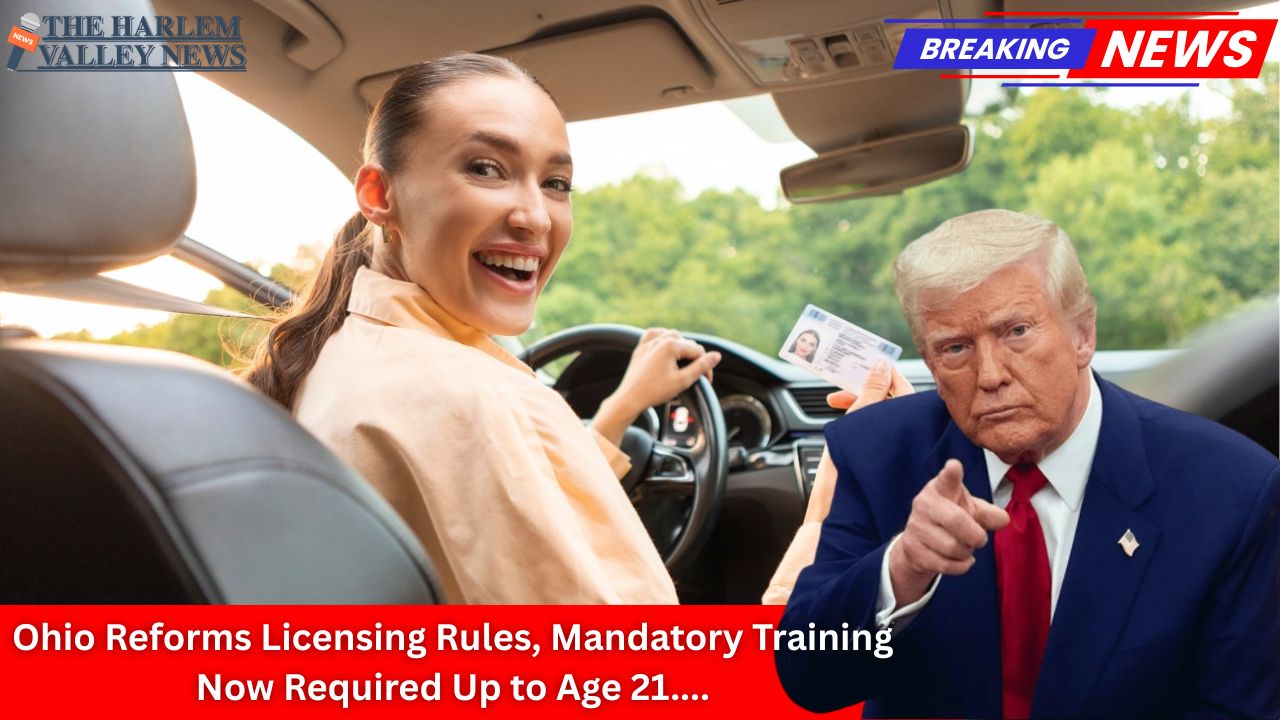Ohio has recently enacted significant reforms to its driver licensing rules that now require individuals under the age of 21 to complete mandatory driver training before obtaining their driver’s license. This change, which is part of the state’s 2025 fiscal year budget, aims to improve road safety by ensuring young drivers receive comprehensive education and practical driving experience before becoming fully licensed. The reforms standardize driver licensing requirements for all new drivers aged 15½ to 20, eliminating previous exemptions that allowed those 18 to 20 years old to bypass full driver education.
Under the new rules effective September 30, 2025, every driver under 21 must complete Ohio’s full driver education curriculum, which includes:
-
24 hours of classroom or online instruction
-
8 hours of behind-the-wheel training with a certified instructor
-
50 hours of supervised driving with a parent, guardian, or licensed adult aged 21 or older, including 10 hours of night driving
Before this reform, only drivers under 18 were mandated to complete this full driver education course, while those aged 18 to 20 could opt for an abbreviated course or skip it entirely. Now, the law requires the same level of training for all young drivers under 21. Individuals aged 21 and older remain exempt from the training requirement and only need to pass the written and road tests to obtain their license.
The rationale behind this reform is supported by crash data showing that drivers aged 18 to 20 are statistically more likely to be involved in road accidents compared to older adults. For instance, the Ohio Traffic Safety Office reported that in 2024, 58% of fatal crashes involving teen drivers occurred in the 18- and 19-year-old age group. Moreover, a large portion of these drivers had either held their licenses for less than a year or had not received formal driver education. The reform intends to reduce these statistics by increasing education and supervised driving practice.
This initiative has received support from Governor Mike DeWine, who emphasized that completing driver training makes young drivers safer not just for themselves but for all road users. Although some concerns have been raised, such as the potential economic impact due to reduced mobility for young adults who might face difficulties completing the training, the state continues to provide grants to help low-income students access driver education.
In addition to the driver education changes, Ohio has also implemented reforms in related areas, such as eliminating driver’s license suspensions for unpaid court fines and fees, and waiving reinstatement fees associated with these suspensions. These measures further support keeping drivers on the road legally and safely.
Below is a summary comparison of the old versus new driver licensing rules for Ohioans under 21:
| Age Group | Previous Rule | Revised Rule (Effective Sept 30, 2025) |
|---|---|---|
| Under 18 | Required full driver education + 50 hours supervised | No change; full driver education + 50 hours supervised required |
| 18 to 20 | Could take abbreviated or no course | Must complete full driver education + 50 hours supervised |
| 21 and older | No mandatory training; must pass tests only | No change; training remains optional |
These changes ensure uniformity in education and training standards for all Ohio drivers under 21 and aim to enhance public safety on roadways.
Summary of New Driver Education Requirements for Ohio Drivers Under 21:
-
24 hours classroom/online driver education
-
8 hours behind-the-wheel training with instructor
-
50 hours supervised driving with adult (including 10 hours night driving)
-
Applies to ages 15½ through 20
-
No exemption for drivers aged 18 to 20 anymore
-
Exemptions remain for those 21 and older
The reforms mark a significant shift in Ohio’s approach to licensing young drivers, reflecting a data-driven strategy to reduce teen driving fatalities and injuries by boosting driver education and experience uniformly across all young drivers. These changes will directly affect families, driving schools, and new drivers in the state starting late 2025.
Ohio is also moving forward with other licensing reforms in various professional fields to make licensing more accessible and effective, but the driver education reform under the state budget is one of the most impactful changes in public safety messaging this year.
By requiring uniform training standards for all new young drivers, Ohio sets a higher safety bar designed to protect youth and everyone sharing the roads. The emphasis is on comprehensive learning, supervised practice, and bringing young adults up to the same driver education level as minors, ultimately promoting a safer driving environment for all.














Leave a Reply